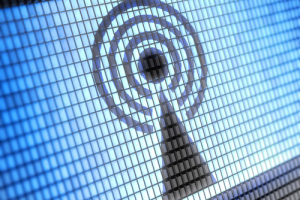As more an more people use more and more data, two companies have tested new LTE technology that helps prevent data bottlenecks in dense population areas.

Since carrier’s began providing high speed 4G LTE service over their networks, the number of people streaming music and movies, or downloading large apps and games has skyrocketed.
Data speeds have gone way up, and with it, so have data demands, as more people switch to cell phones with faster radios on faster networks and carrier’s like T-Mobile and Sprint both push for unlimited data, or at least high data caps.
This new access to content due to faster data access is awesome for many people, but just like any transportation system, such as highways, the system that transports our data can get clogged, which sort of negates the whole point of high speed data access.
That’s where Huawei and NTT DoCoMo come in. The two companies have just recently performed a successful test of an LTE broadcast using the unlicensed 5Ghz spectrum normally used for WiFi.
Most carriers broadcast over spectrum licensed by national regulating authorities (such as the FCC in the United States). Licensed spectrum is well regulated and ensures that consumers can purchase service from one company without another company blocking or clogging the system.
The 5Ghz frequency is an unlicensed frequency, because it is used by consumers and businesses for WiFi, which would be a little excessive to regulate in the same way as the frequencies used by carriers.
5Ghz typically has lower range (only a few hundred meters) and doesn’t penetrate solid objects very well, but it does not require a large open space to broadcast, making it very well suited for mesh style networks in capacity laden cities.
Some people may find the concept of 5Ghz LTE deployment a bit redundant, considering most WiFi broadcasts use the same frequency, the two broadcasts would usually be suited for the same areas, and many people are already accustomed to to using WiFi when available since it can be more reliably and some people with data caps are looking for ways to avoid using up their cap.
This homogenization of radio frequencies is only a necessary component of wireless technology as we move forward, though. Carrier aggregation (use of multiple frequency bands in a single broadcast) is an essential component of next generation LTE Advanced, and many cellular providers are already moving towards WiFi calling and offering more “smart” network features.
The benefits of such service is undeniable. Besides the benefits of carrier aggregation, 5Ghz WiFi alone offers 1.6x the capacity of current methods, but the more networks can do, the more concerns are raised over issues like net neutrality, where wireless providers’ smart networks will prioritize traffic to offer the best quality of service.
The technology isn’t available immediately (it seems that’s always the case), but Huawei and NTT DoCoMo will continue testing through 2015, and we may actually start seeing 5Ghz deployment in 2016.
Source: PC World
Be social! Follow Walyou on Facebook and Twitter
Read more on Walyou, Apple And IBM Are Teaming Up to Tackle Enterprise Mobility, How to Share Your Android Screen to Your TV With Chromecast










